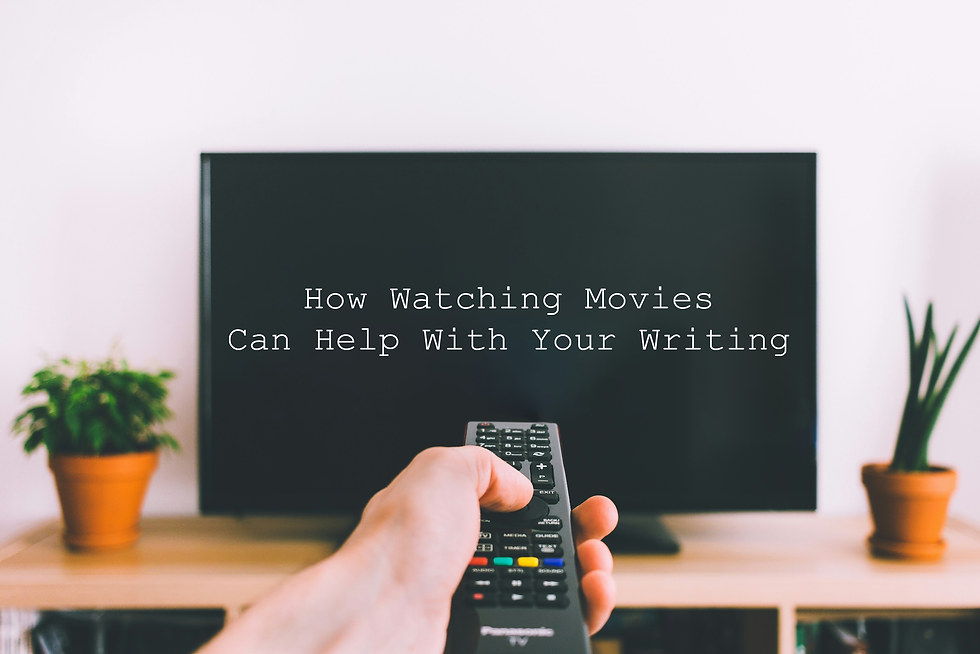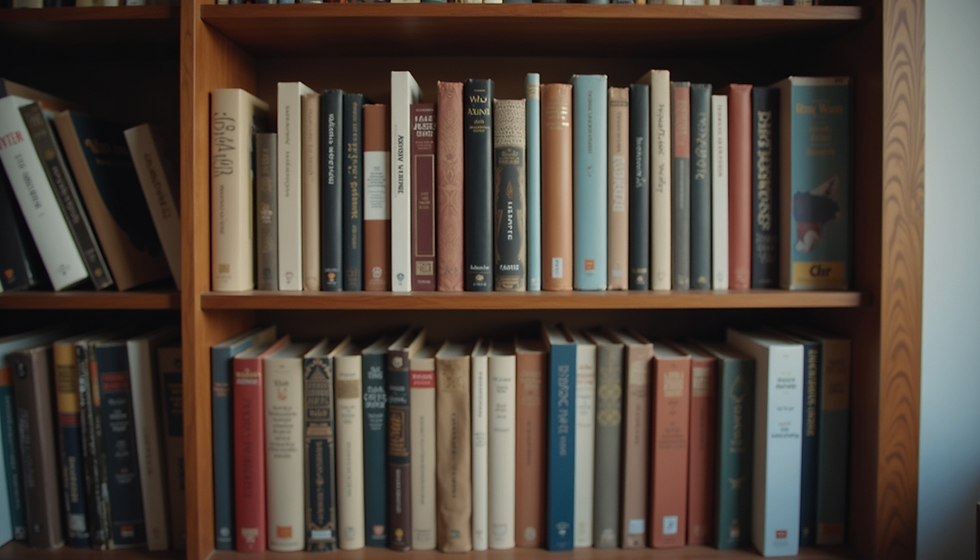Visual Storytelling: How Watching Movies Can Help With Your Writing
- Madigan Thompson
- Jul 31, 2025
- 6 min read

Ten-year-old me stared at the TV, clutching a pillow in her hands. Her eyes were wide as saucers, her mouth open in a slack-jawed, goofy grin. Epic music blared from the speakers, not the best, since it was her Nana and Papa's older TV, but at the moment, she didn't care. Because, before her very eyes, Peter Pevensie raised his sword and bellowed "FOR NARNIA AND FOR ASLAN!" and charged into battle before a small army to challenge a mightier foe. It was the first fantasy battle she had ever watched, and it changed her life forever.
While the live-action movie adaptation of The Lion, the Witch, and the Wardrobe isn't any Lord of the Rings, it still has a very special place in my heart. Not only because it's an excellent adaptation of one of my favorite book series (the first fantasy series I read, by the way), but because of what it taught me about writing, because of what it unlocked inside of little ten-year-old me on that couch that day.
So, today we're not discussing book-to-movie adaptations, but rather what an author can learn from movies.
After all, it's usually movies, not books, that inspire me as an author.
DIALOGUE & MUSIC

Movies and books are two very different things, though both are used for storytelling. While with books you use your imagination to bring to life the words from the page, with movies, everything is already before your eyes. However, that doesn't mean you still don't have to use your imagination. That is because, while writing allows for the clear expression of inner dialogue and characters' thoughts, movies (with the exception of narration and spoken internal monologue) have to convey the characters' thoughts and feelings through different means.
And that is one thing authors can learn and benefit from. Oftentimes, we get too comfortable telling and not showing. We want the reader to know everything, so we "tell" it. However, to break out of the habit of over-telling and over saying, watch a good movie and see just how much you can glean from:
The Dialogue - Since characters can't outright say what they're thinking, good movies do an excellent job layering dialogue with not only implied subtext the watcher can pick up on, but also how they say the words and how they look as they say it. Authors can use the same tools, having character dialogue layered with personality, subtext, and describing how it is said to avoid simply telling or having the character say how they feel about something.
The Music - While most books don't come with a set soundtrack, that doesn't mean as an author you don't have a 'soundtrack' for your story. While some people have character-specific songs or environmental music, like rain or nature ambience, I prefer a more movie-like approach. I have sad music for emotional scenes, or unsettling music for villain's scenes to freak me out so much I'll look over my shoulder while I'm writing. I have battle music for fight scenes to get the pace of the scene, and culturally appropriate music to get the aesthetic feel if I am basing a book off a specific culture. Music is used expertly in movies to set the mood, tone, and energy of the scene, which is a technique I have employed and found to benefit my writing immensely.
SETS & ENVIRONMENT

One thing I always complain about when I watch movies is that they can convey a lot of information without using words: case in point, the sets and environment. From the costumes to the food to the sets, they convey everything expertly, yet say nothing. But still, that doesn't mean we can't benefit from this gripe of mine. We can't describe every little piece of the setting in detail; otherwise, our readers will be there all day, but we can learn from how the movies go about building their sets and conveying the world.
The Sets - When watching a movie, take note of the first impressions you get from a set, houses, cottages, bakeries, village streets, etc. What about the set gives that impression? Then, describe it in the simplest terms. While movies leave hardly anything to the imagination, that is an author's strong suit. So, was it the layers of wear and tear, the roughly hewn stones, the overgrown garden, and bright colors that gave you a warm, cozy vibe? Or the sterile, bland, metallic setting that gave off a feeling of cold dread? From color palettes, smells, to sounds, to intricate patterns, to clothing, describe only enough to build the "set", enough to set the stage and the tone of the scene, then continue with more details as the characters stay in that "set." No need to go on whole-page rants about how the village square looks.
The Environment - The same goes for the environment. Now, you might be thinking that the "set" and environment of a story are the same thing. But I would say that while a set is more specific, the environment is the world itself. From the delicate flowers to the mighty mountains to the animals that scamper and make noises in the background, the environment is the natural world of your story. Think sweeping shots in movies, giving you a lay of the land, or traveling montages that show not only the passage of time, but also the changing of the scenery. Think of travelers around a campfire, what kind of animals they hear at night, whether the forest is foreboding or peaceful. This follows the same principle as portraying the "sets" of your world, although on a larger scale. Again, let the environment feed into the tone of the scenes, just as Lord of the Rings shows wonder in the sweeping shots of the Misty Mountains, then dread in the depths of Cirith Ungol (Shelob's Layer).
ACTION & BLOCKING

To me, this is one of the main benefits of authors watching movies. Action scenes and overall blocking are not only something hard to achieve in books if you don't have a picture in your head, but something that, if written poorly, can be very boring and very flat.
The Action - Do I love action in movies? Yes, yes, I do. Do I love writing action in my stories? One hundred percent. Mainly because, to me, I see my book play out in my head as a movie. Every movement in 4KHD. Now, the trick is not only getting to the point where you see it vividly, but also translating what you have in your head onto the page in a way where it could play out in your reader's head.
Rule #1: NEVER, and I mean NEVER, go into long explanations of special movements or techniques. Keep everything short. Short sentences. Short descriptions. Rule #2: Keep it small. By that, I mean focusing on one character at a time and only what they see, hear, feel, etc. This makes writing realistic action more manageable. Rule #3: Similar to the setting and environment, observe a fight scene in a good movie and note its flow. Write what you see, how the environment of the scene, the pacing, the push and pull, how it escalates, where the lulls are, etc. This will help drastically with your action.
The Blocking - While blocking is used for action scenes as well, I will use this time to talk about mundane blocking. Notice that in movies, characters are always doing something, even when they are simply sitting around and talking. Each movement is intentional to portray more of the character and inner dialogue (see back in the dialogue section). So, even when there aren't action scenes, your characters should not be stagnant. Watch a movie and note how a character moves while they're speaking, taking note of how it pushes the scene forward, and work that into your writing. Not only does it bring your characters to life, but it also brings more realism overall.
CONCLUSION

The way you know when you've arrived at the point of visual storytelling is not simply if you see your book playing out as a movie in your head. No, it's when your reader says something along the lines of "Wow, this could easily translate into a movie. I could see it play out so clearly in my head."
Our goal as writers is to transport and immerse our readers in our worlds fully. For me, when a book is overwordy or bogged down by too many descriptions, I struggle to see the story unfold in my head. Instead, I'm too busy trying to get through the dialogue for the action, or get through the action for the overall plot. The power of movies lies in the fact that they feature "real" people on the screens. You can see it. You can almost touch it. It's high energy, always moving, even in the quiet moments. The dialogue and expressions are intentional. Every set and environment, from lighting to music, is there to portray specific ideas and subtext.
And I believe that if you can bring to life that which lives and breathes in your mind to the page, books can do the exact same.




Comments